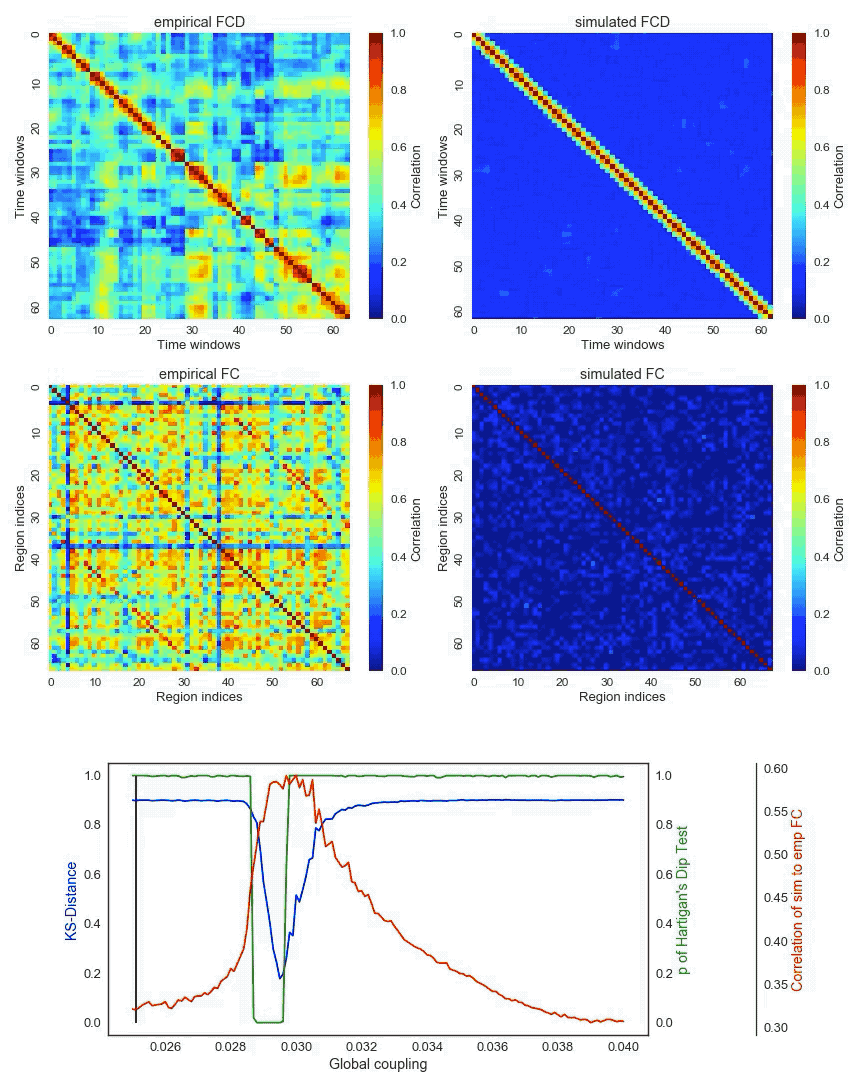Our new preprint Optimal working points of individual Virtual Brains is out! You can read it here.
With our international colleagues, we used The Virtual Brain simulation platform, to explore 50 individual adult human brains (ages 18-80). We investigated how personalized connectome-based brain network modelling captures various empirical observations as measured by functional magnetic resonance imaging (fMRI) and electroencephalography (EEG). We systematically explored the role of conduction velocity, global coupling and graph theoretical features of individual SCs.
Our results are twofold:
Firstly, for each individual brain we identified a converging parameter subspace that yielded realistic brain activity:
- topology of resting-state fMRI functional connectivity (FC)
- functional connectivity dynamics (FCD)
- electrophysiological oscillations in the delta (3-4 Hz) and alpha (8-12 Hz) frequency range and their bi-modality low and high energy modes.
We only see biologically realistic mode switching in the global network when the local model is in a bistable regime.
Secondly, our simulations reveal the explicit network mechanisms that lead to electrophysiological oscillations, their bimodal behaviour and inter-regional differences.

